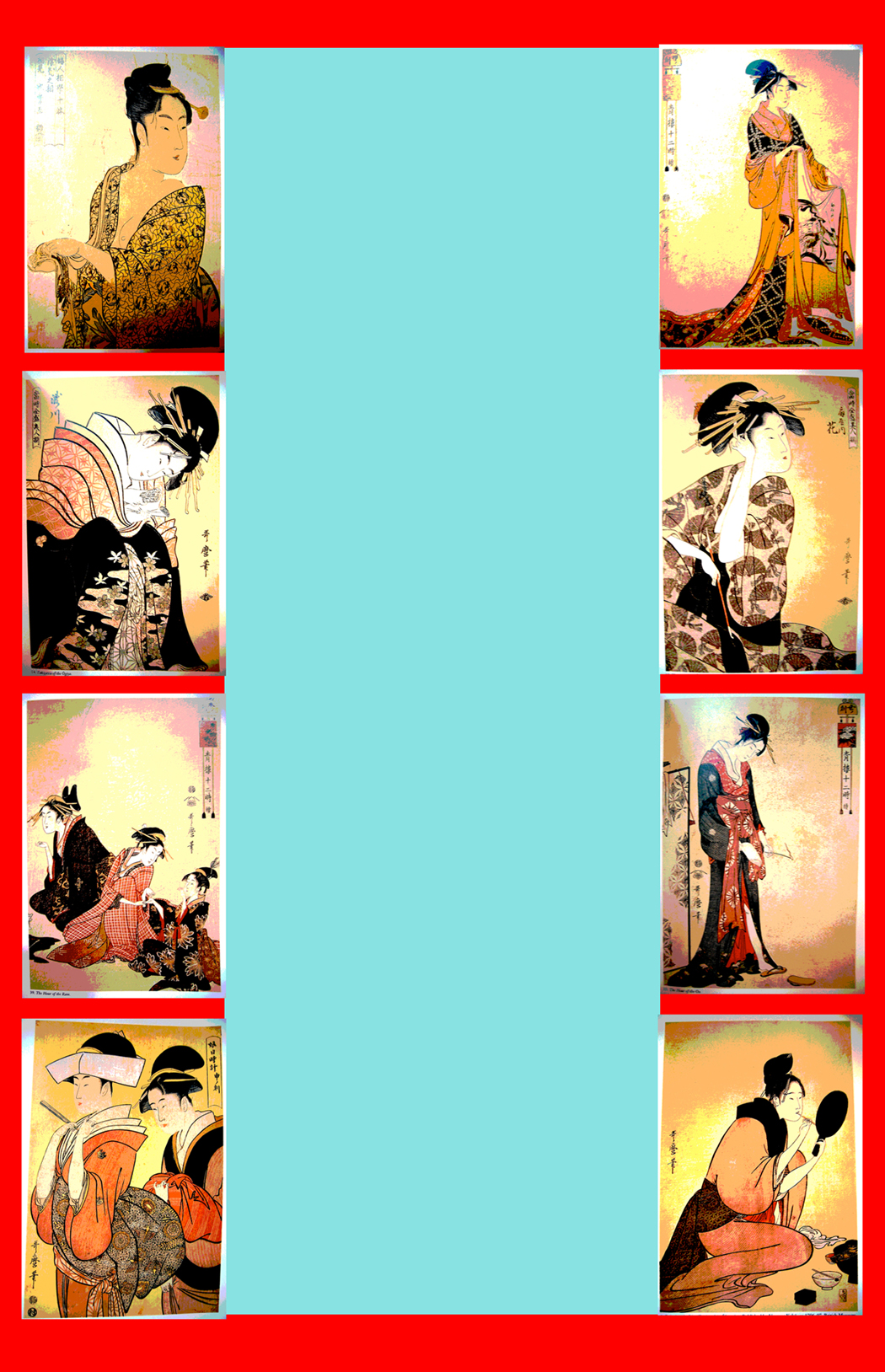
HOME ~ PROLOGUE ~HISTORICAL BACKGROUND~ ANIME ~ MANGA ~ KABUKI THEATER ~ BIBLIOGRAPHY ~ THE OTAKU ~ SUMMARY ~ CONCLUSION ~ ABOUT THE AUTHOR ~SITE MAP

THE FLOATING WORLD - HISTORY OF JAPANS' EDO PERIOD
The Edo period in Japanese history spans from 1615 through 1868. In order to understand how present day manga and anime relate to the Ukiyo philosophy in Japan, it is necessary to touch on some background information. Edo which was the name of the city in Japan now referred to as Tokyo, also refers to the early modern period of Japanese art. Ukiyo, which is also referred to as the “Floating World,” (Ukiyo is synonymous with the phrase “Floating World”) illustrated fantastic thought through the arts and its social practices.
The philosophy of the Edo period has survived into the present world via the manifestation of contemporary Japanese manga and anime. Manga is a term used to describe contemporary Japanese cartoons; anime refers to contemporary Japanese animations. Manga and anime are derived from Edo period ukiyo-e prints and books, ‘yellow jacket’ books called kibyoshi, (Kibyoshi refers to popular mass-produced inexpensive books made in the Edo period encompassing multiple genres) and the Kabuki theater.
The philosophic and artistic movement of the Edo period promoted fantastic thought which was a powerful catalyst for social and cultural change. It features a time in Japan when stability and isolation created a concentrated Japanese culture. The Tokugawa shogun was able to unify a decentralized feudal system in Japan by their consolidation of power. Tokugawa shogun refers to the ruling dynasty that ruled and unified Japan during the Edo period. The shogunate banned all foreign books and did not allow travel outside of Japan. This newly unified Japan was a highly stratified feudalistic society with extreme class boundaries and rules of conduct as well as a strict code of laws. In an attempt to escape a strict and regimented reality, the people of Edo city embraced hedonistic pleasures in their lifestyles through the Floating World. The Floating World was a rich matrix of intellect, materialism, and erotica that stimulated the visual arts. The rise of a wealthy merchant class with its demand for fantastic images of contemporary life, coupled with the intellectual pursuits of the samurai, resulted in ordinary life transforming into the ‘extraordinary.’ Beautiful women known as bijin became popular subjects in Ukiyo art. Fantasies of pleasure, erotica, entertainment and up-to date fashions ruled the artistic esthetic. The ukiyo-e print and book was born in this milieu. Ukiyo-e is a very special type of visual art made from the woodblock printing process. It was mass produced for relatively wealthy members of Edo society. The result of this technology was single prints of various sizes, and many books of Ukiyo-e visual art. Although they were popular forms of entertainment, these books did not carry much status as art forms.
In
Sex and the Floating World, Timon Screech describes ukiyo
as a state of mind that is separate from the realities of daily life (Timon
Screech, Sex and the Floating World, London, Reaktion Books, 1999, 8).
The Floating World, which was essentially a constructed reality in Edo,
was centered in the Yoshiwara, a place for ‘high class’ erotic
pleasures and fantasies. The Floating World was a metaphorical place where
people could escape from the harsh reality of daily life and the Edo periods’
repressive political and social milieu. As fantastic Ukiyo-e prints,
books, and Kabuki theater, of the Edo period were an escape from reality,
contemporary manga and anime continue this tradition as
contemporary mediums of expression. Essentially, the spirit of the Ukiyo
lives on through contemporary manga and anime.